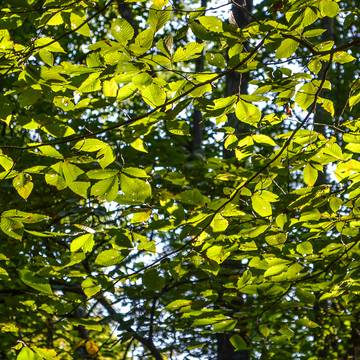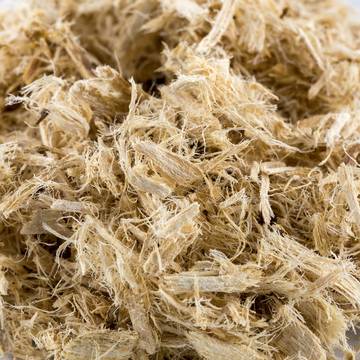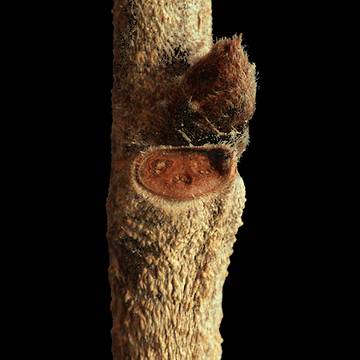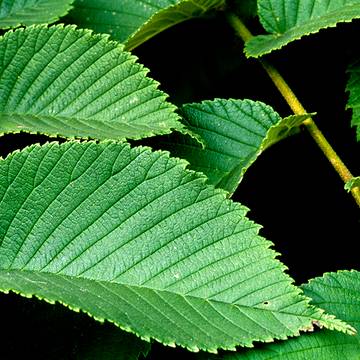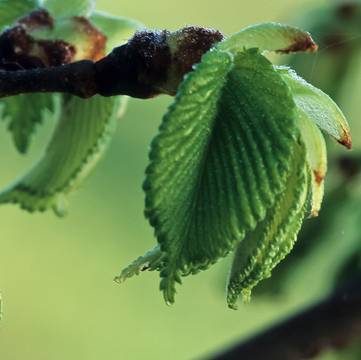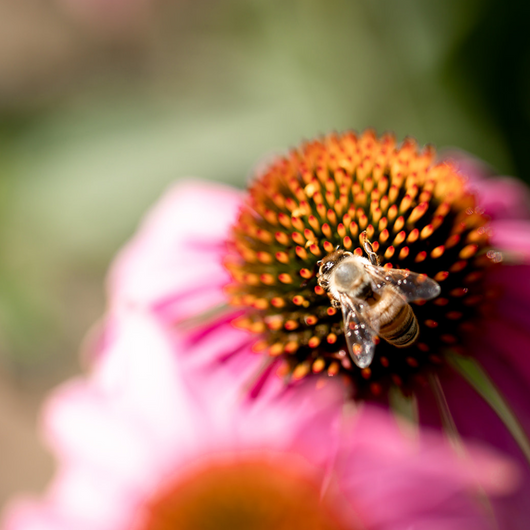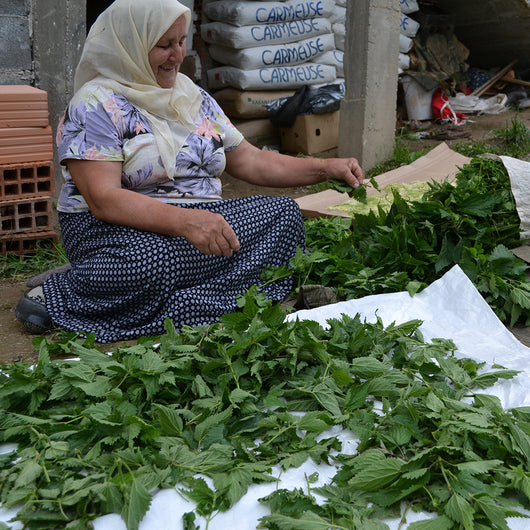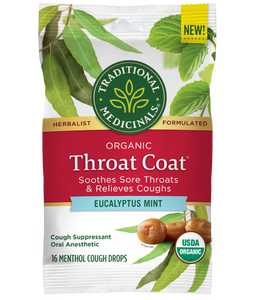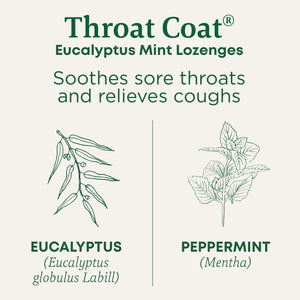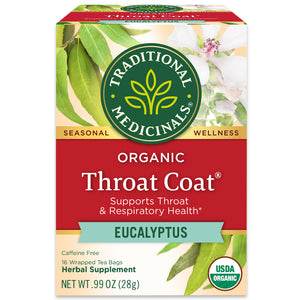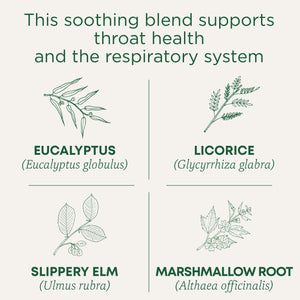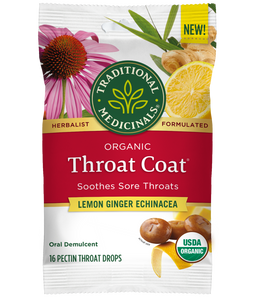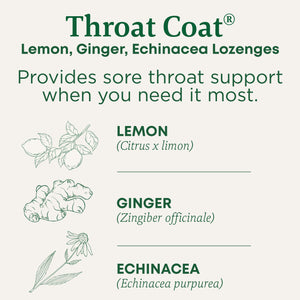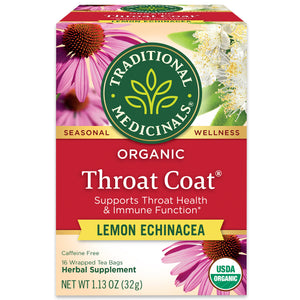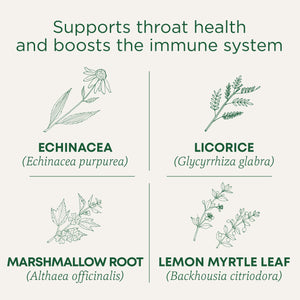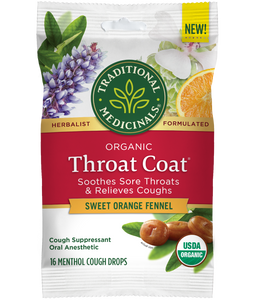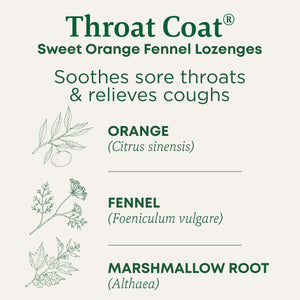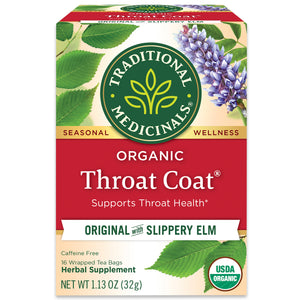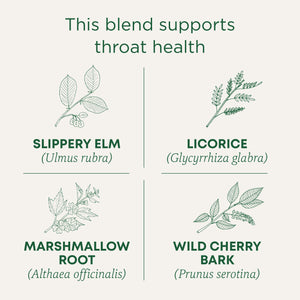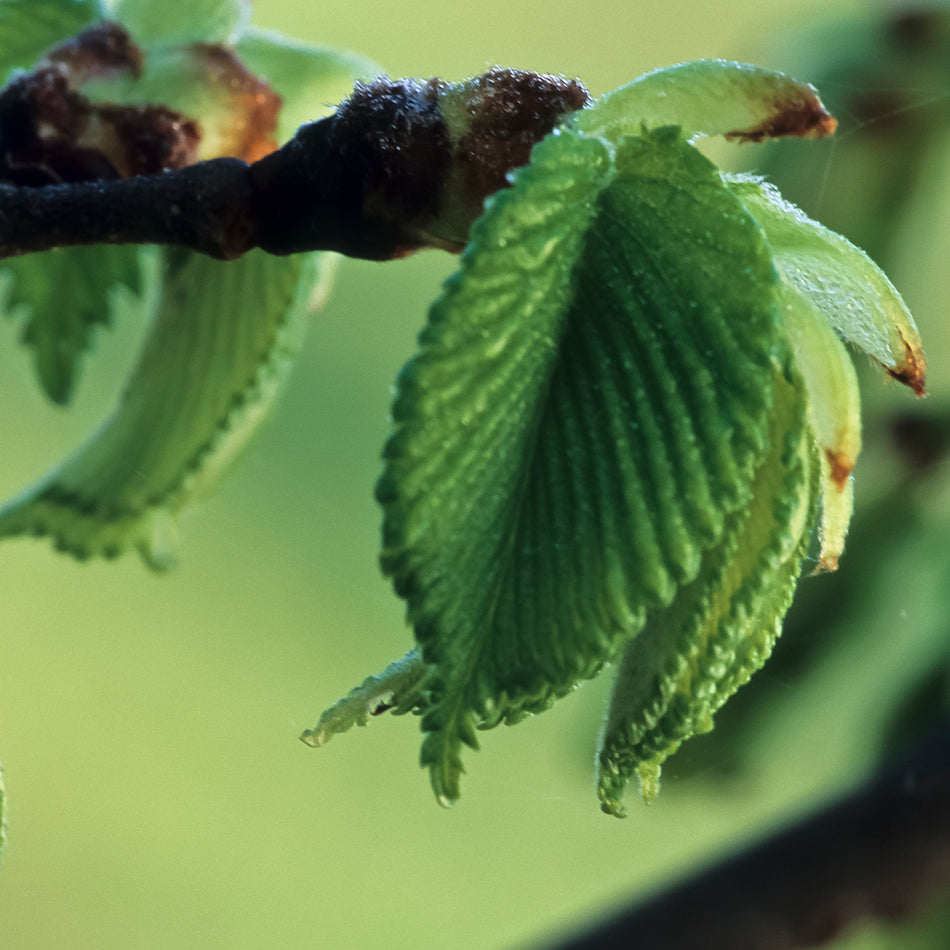
Slippery Elm
Ulmus rubraSlippery elm is a nutritive and mucilaginous botanical that’s commonly used to soothe and lubricate tissues throughout the digestive tract.*
This soothing, silky bark is known as every singer’s best friend.
What are the Benefits of Slippery Elm?
Therapeutic uses of elm have been well documented for thousands of years, but the specific species of the Ulmaceae family that we use in our remedies is indigenous to North America. The inner bark of this tree is used to create a slippery—almost slimy—tea to ease tissues throughout the GI tract.*
This inner bark contains what we herbalists call “mucilage.” This complex carbohydrate is hydrophilic and known for its ability to trap water, which is why when the inner bark is powdered and combined with water it doubles its volume and creates a thick gel-like substance. Flavonoids present in the bark also make this herb slightly astringent and capable of toning, tightening, and restoring overworked tissues.*
Folklore & Historical Use of Slippery Elm
The name elm or ulm derives from Teutonic (Germanic) and nearly all Celtic dialectics. In Teutonic mythology, the tree formed the very first woman, named Elma, and the ash of the first name, Aske. In the United States, Ulmus was first named botanically by a colonial plant collector and Scottish botanist named William Aiton.
However, this specific elm was (and still is) used and well-loved by First Nations People in North America way before the United States ever existed. Depending on the tribal nation, the inner bark was used in many different ways. For instance, a decoction was traditionally drunk as a laxative by the Menominee who live near the state now called Wisconsin. They also reported to use the plant topically to draw out impurities from wounds. Other tribal nations consumed slippery elm tea during the last two months of pregnancy to support labor.
American herbalists of European descent primarily used this plant as a nutritive tonic and demulcent. The American Eclectics, for instance, commonly prescribed this drink to soothe dry tissues in the lining of the stomach and GI tract.* When food was scarce, early American settlers mixed slippery elm with meal to create a bread-like food. In more recent history, slippery elm became more widely known through the popularization of commercially-available lozenges in the 19th Century.
Botanical Description & Habitat
Slippery elm’s native habitat is the Midwest to the east coast, with its northernmost point in southern Quebec and its southernmost point in north Florida. It’s a medium-sized tree that generally grows to about 60-70 feet tall and thrives in moist uplands but can sometimes be found in dry limestone soils. This elm is also a very shade tolerant understory tree and can be found growing in floodplains and rocky slopes. Some healthy trees can live to be as old as 200 years.
In the wild you may be able to identify this plant by its leaves. The leaves are wide, large, and broadly elliptical to ovate. They are sandpaper-like on both sizes and often very green. When the inner bark is harvested sustainably, the tree can easily live on. Traditional wild collectors steward the lands and do not cut down the trees, they simply leave a vertical strip of bark—a foot or wider—so that the tree can thrive and be harvested again in future years.
When To Use Slippery Elm
During dry weather to support delicate tissues.
The Business of Sustainable Plants
Our business is rooted in plants, and for us, it’s a business imperative that we care for the ecosystems where these plants live and thrive. We believe that everything is interconnected, which means supporting ecosystems and the farmers and collectors who harvest and gather our herbs. Finding opportunities to reduce or eliminate emissions at the source, we support organic and regenerative farming practices as well as voluntary certifications like Organic and FairWild. These ensure the absence of pesticides, herbicides, as well as the ongoing sustainability of wild collection, and the health and livelihoods of the collectors who forage. Josef Brinckmann, Traditional Medicinals’ Research Fellow, Medicinal Plants and Botanical Supply, asserts, “Everyone has a role to play in preserving biological diversity. One way of doing that is by equitably supporting the local people to serve as stewards of the land.”
It Starts with Organic
We choose to source organic because we believe in the positive impacts it has on environmental sustainability, biodiversity, and overall ecosystem health. Organic helps us increase transparency while prioritizing consumer well-being and farmer success, which is key to producing the high-quality herbs we source. In 2021, we procured 2.73 million pounds of certified organic herbs, over 99.7% of our total botanical herbs purchased. Volumes were down slightly from FY20 due to timing of inventories received.
The impact from organic farming creates a vital ecosystem through improved soil health, water quality, pollinator habitats, and biodiversity. Organic farms also have increased carbon sequestration potential through long-term carbon storage in the soil, helping to mitigate climate change.
One of the benefits of organic that we most value is farmer health. We care deeply about the people who produce our herbs, ensuring that they are not exposed to synthetic chemicals found in conventional agriculture.
Fair Trade
We believe that everyone deserves a fair wage for hard work. That’s one of the reasons why we’re committed to fair trade. Traditional Medicinals® is a registered Fair Trade “brand holder”, “licensee” and “manufacturer,” and our products are certified by Fair Trade USA, an independent third-party certifier. We were an early adopter of Fair Trade, having launched our first fair trade tea product in 1998, just one year after Fairtrade International (FLO) was established. We continue to work closely with our network of producers to help them to implement fair trade standards and get certified.
Throat Coat® Eucalyptus Mint Lozenges
Throat Coat® Eucalyptus Tea
Throat Coat® Lemon Echinacea Lozenges
Throat Coat® Lemon Echinacea Tea
Throat Coat® Sweet Orange Fennel Lozenges
Additional Information
Important Precautions:
Consult your healthcare practitioner prior to use if you are pregnant or breastfeeding.
Legal Disclaimer:
The information and other content in this article are designed to provide a general overview of the botany, cultural history, and traditional uses of this herb. It is not intended and should not be construed as health advice. Every person is unique and you should consult with your health care provider before using any herbal product or supplement.

